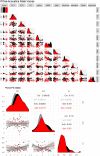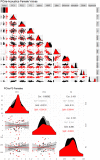Forming social impressions from voices in native and foreign languages
- PMID: 30674913
- PMCID: PMC6344506
- DOI: 10.1038/s41598-018-36518-6
Forming social impressions from voices in native and foreign languages
Abstract
We form very rapid personality impressions about speakers on hearing a single word. This implies that the acoustical properties of the voice (e.g., pitch) are very powerful cues when forming social impressions. Here, we aimed to explore how personality impressions for brief social utterances transfer across languages and whether acoustical properties play a similar role in driving personality impressions. Additionally, we examined whether evaluations are similar in the native and a foreign language of the listener. In two experiments we asked Spanish listeners to evaluate personality traits from different instances of the Spanish word "Hola" (Experiment 1) and the English word "Hello" (Experiment 2), native and foreign language respectively. The results revealed that listeners across languages form very similar personality impressions irrespective of whether the voices belong to the native or the foreign language of the listener. A social voice space was summarized by two main personality traits, one emphasizing valence (e.g., trust) and the other strength (e.g., dominance). Conversely, the acoustical properties that listeners pay attention to when judging other's personality vary across languages. These results provide evidence that social voice perception contains certain elements invariant across cultures/languages, while others are modulated by the cultural/linguistic background of the listener.
Conflict of interest statement
The authors declare no competing interests.
Figures





References
-
- Peng Y, Zebrowitz LA, Lee HK. The Impact of Cultural Background and Cross-Cultural Experience on Impressions of American and Korean Male Speakers. J. Cross. Cult. Psychol. 1993;24:203–220. doi: 10.1177/0022022193242005. - DOI
-
- Jones BC, Feinberg DR, DeBruine LM, Little AC, Vukovic J. A domain-specific opposite-sex bias in human preferences for manipulated voice pitch. Anim. Behav. 2010;79:57–62. doi: 10.1016/j.anbehav.2009.10.003. - DOI
Publication types
MeSH terms
LinkOut - more resources
Full Text Sources

